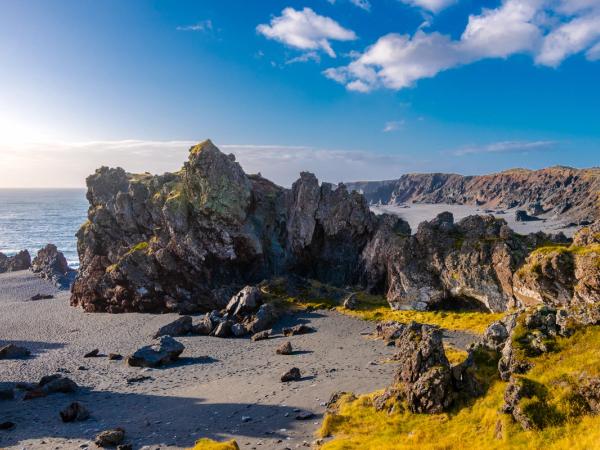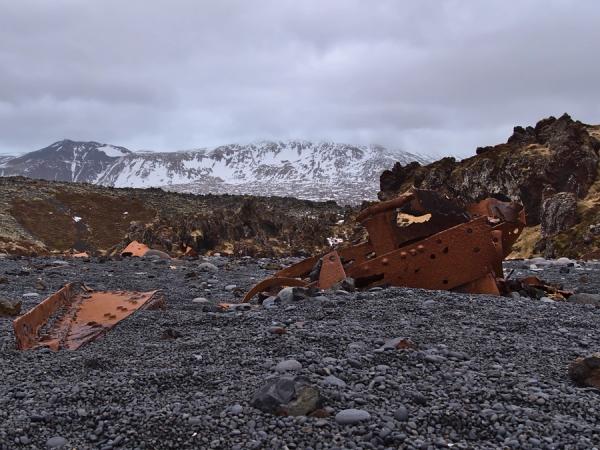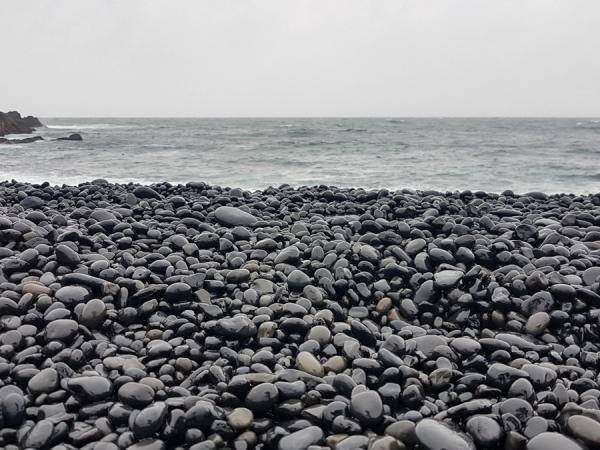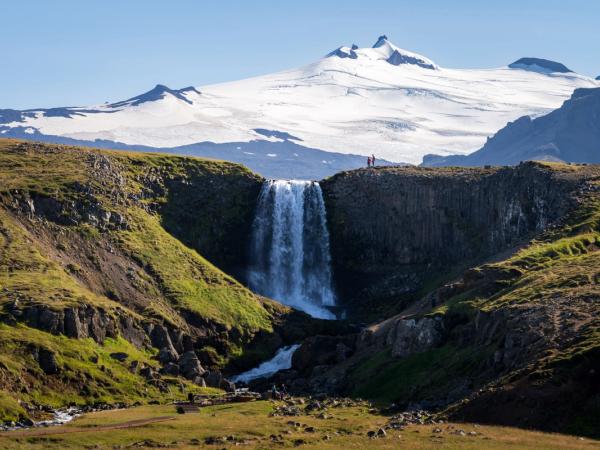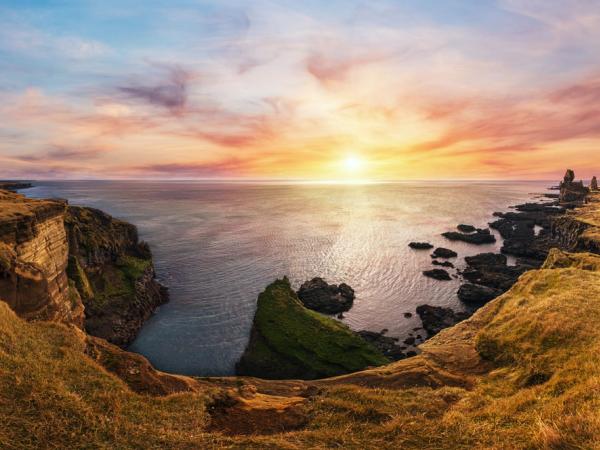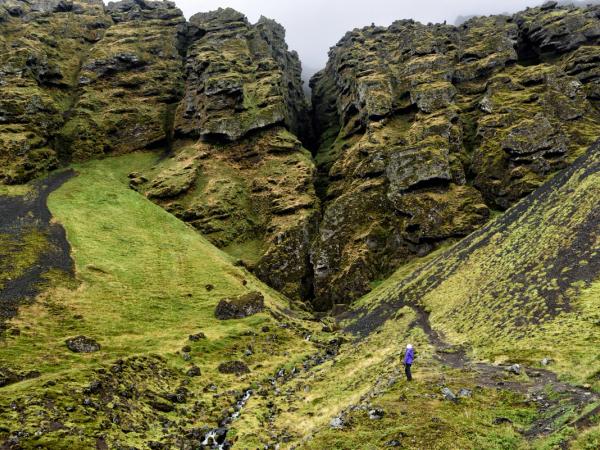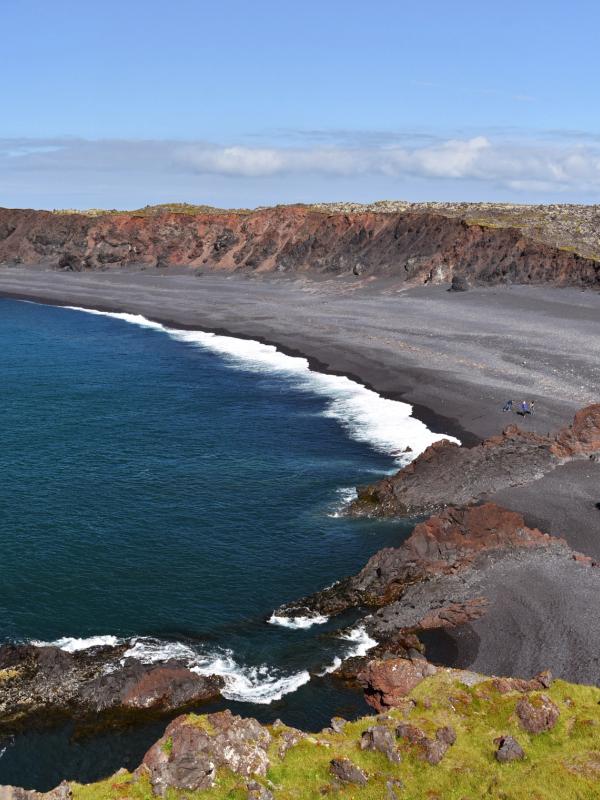
Djúpalónssandur Beach in Iceland: A Complete Travel Guide
Tucked away on Iceland's Snæfellsnes Peninsula, Djúpalónssandur Beach stands out with its black sand, old fishing traditions, and scattered shipwreck pieces. While many travelers stick to Iceland's popular South Coast beaches, this lesser-known spot offers a glimpse into the country's seafaring history and volcanic landscapes without the big crowds.
Key Takeaways
- Djúpalónssandur is a black sand beach on Iceland's Snæfellsnes Peninsula, shaped by volcanoes and ocean waves
- The beach has four historic lifting stones that tested fishermen's strength, weighing from 23 kg to 155 kg
- Metal pieces from the British ship Epine GY7, which crashed here in 1948, are protected and spread across the beach
- Two freshwater pools, Djúpulón (5 meters deep) and Svörtulón (thought to heal), sit behind the beach
- Best to visit in summer (June-August) for better weather, or spring/fall (April/May and September/October) for fewer people
- Located about 180 km from Reykjavík, you can drive yourself or join a tour
- Nearby spots include Snæfellsjökull Glacier, old fishing villages, and amazing rock formations
What's Djúpalónssandur Beach?
Djúpalónssandur Beach is a hidden black pebble beach on the western edge of Iceland's Snæfellsnes Peninsula. Instead of golden sand, smooth black pebbles cover the shore, making a distinct sound as waves pull back to sea. The beach is part of Snæfellsjökull National Park, below the famous glacier-topped volcano that inspired Jules Verne's "Journey to the Center of the Earth."
What makes this beach special is its mix of natural beauty and history. From old strength-testing stones to shipwreck remains, Djúpalónssandur offers more than just great views – it tells stories of Iceland's fishing past and the Atlantic Ocean's power.
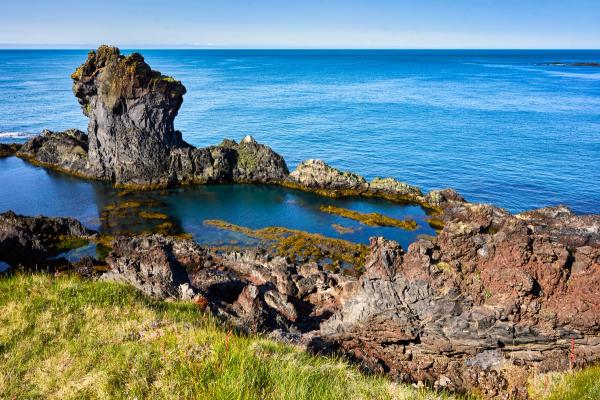
About Djúpalónssandur Beach: Formation & Interesting Facts
Djúpalónssandur Beach formed through volcanic activity from the nearby Snæfellsjökull volcano. Lava flows cooled and broke down into the black pebbles that now cover the beach. These pebbles, called Djúpalónsperlur ("pearls of the deep lagoon"), are constantly shaped by strong ocean waves.
The beach has a curved bay with dark cliffs and striking lava shapes. Behind the shore are two freshwater pools: Djúpulón (meaning "deep lagoon" and about 5 meters deep) and Svörtulón (meaning "black lagoon"). These pools rise and fall with the tide, suggesting they mix with seawater.
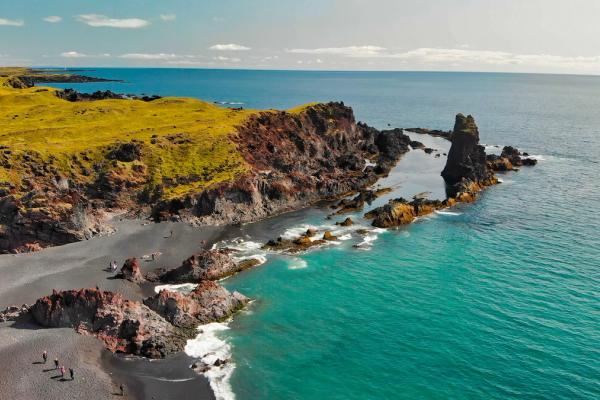
Interesting Facts
The beach has several elements that make it more than just a pretty spot:
Old Lifting Stones
Four stones of different weights (23 kg, 54 kg, 100 kg, and 155 kg) remain on the beach, once used to test fishermen's strength. Each stone has a name that judged the lifter's ability:
- Amlóði (23 kg): "Useless"
- Hálfdrættingur (54 kg): "Weakling" or "half-carrier"
- Hálfsterkur (100 kg): "Half-strong"
- Fullsterkur (155 kg): "Full strength"
- Fishermen had to lift at least the Hálfdrættingur to qualify for work on fishing boats.
Epine GY7 Shipwreck
Rusty iron pieces from a British fishing boat that crashed on March 13-14, 1948, lie scattered across the beach. The accident killed 14 people, with only 5 survivors. These remains are protected and shouldn't be moved.
Legendary Pool
Svörtulón pool is said to have been blessed by Bishop Guðmundur góði (1161-1237), giving it healing powers.
Protected Pebbles
The black pebbles are legally protected, and taking them is forbidden – local stories say they bring bad luck.
Rock Formations
Unique formations include Söngklettur (the "singing rock," a reddish lava rock) and others that local tales claim are trolls turned to stone.
Why Djúpalónssandur Beach is Worth Visiting
Djúpalónssandur offers an experience beyond typical beach visits. Here's why it deserves a spot on your Iceland trip plan:
- Unique landscape: The contrast between black pebbles, blue sea, and green cliffs creates a striking setting unlike other beaches.
- Cultural heritage: The lifting stones and fishing history show traditional Icelandic life and the importance of sea strength.
- Historical significance: The shipwreck pieces serve as a reminder of the ocean's power and the risks fishermen faced.
- Fewer crowds: While more popular now, Djúpalónssandur still has fewer visitors than South Coast spots like Reynisfjara.
- Lots to do: From testing your strength with lifting stones to exploring lava shapes, watching birds, and hiking nearby trails, there's something for everyone.
- Great photos: The beach offers countless photo opportunities, from detailed pebble shots to dramatic coastal landscapes.
Location & How To Get There
Djúpalónssandur Beach sits on the western edge of the Snæfellsnes Peninsula in western Iceland, about 180 km from Reykjavík. It's at the foot of Snæfellsjökull glacier within Snæfellsjökull National Park.
By Self-Drive
The best way to get to Djúpalónssandur Beach is by renting a car or a campervan, as driving yourself gives you freedom to explore at your own pace:
- From Reykjavík, take Route 1 (Ring Road) north
- At Borgarnes, turn onto Route 54 toward Snæfellsnes
- Follow Route 54 around the peninsula
- Near Hellissandur, follow signs to Djúpalónssandur
The drive takes about 3 hours from Reykjavík. There's a parking lot with bathrooms near the beach, and a short 15-20 minute walk through a lava field leads to the shore.
By Guided Tour
Several companies offer guided tours to the Snæfellsnes Peninsula that include Djúpalónssandur:
- Day trips from Reykjavík (10-12 hours total)
- Multi-day packages that cover more of the peninsula
- Small-group tours with detailed history and geology information
Tours typically include transportation, a guide, and stops at other peninsula highlights. Prices range from $80-150 per person for day trips.
Best Time to Go
Iceland's weather greatly affects your experience at Djúpalónssandur. Here's what to expect throughout the year:
Summer (June-August)
Summer brings milder temperatures between 10-15°C (50-59°F) and extended daylight hours, including the Midnight Sun phenomenon. The roads are in better condition, making driving safer and more accessible. You'll have plenty of time to explore with daylight lasting well into the evening. Keep in mind that this is peak tourist season, so expect more visitors at the beach and higher prices for accommodation and tours across Iceland.
Spring/Fall (April/May and September/October)
The shoulder seasons offer a good balance of decent weather and smaller crowds. Temperatures tend to be slightly cooler than summer, and weather conditions can change more frequently. These months give you a chance to enjoy the beach with more space to yourself. If you visit in late September or October, you might even catch the Northern Lights on clear nights – a spectacular backdrop to the beach's dark landscape.
Winter (November-March)
Winter transforms Djúpalónssandur, creating possible snow and ice formations that yield a dramatic, otherworldly scenery. You'll likely have the beach almost entirely to yourself. However, shorter days mean less time to explore, sometimes with only 4-5 hours of good daylight. Road conditions can be challenging with snow and ice, and temperatures drop significantly, limiting how long you can comfortably stay outdoors. Winter visits require more planning, proper winter gear, and regular weather checks.
For the best experience, aim for summer months or spring/fall. The beach is open year-round, but winter visits need more planning and weather checking.
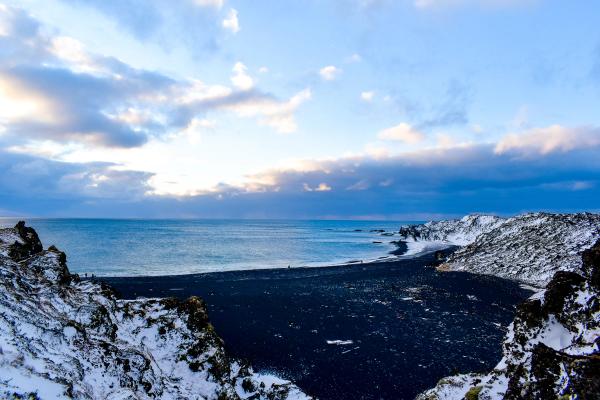
What to Wear
Iceland's weather changes quickly, so proper clothing is key:
Essential Clothing
- Layers: Start with a warm base layer, add middle layers, and top with waterproof, windproof outer layers
- Sturdy, waterproof shoes: The uneven surface of pebbles and lava needs good ankle support
- Hat and gloves: Even in summer, the coastal wind can be very cold
- Rain gear: Be ready for sudden rain no matter the season
Safety Gear
- Bright clothing: Helpful in bad weather, especially if hiking nearby
- Walking stick: Useful for walking on the uneven beach surface and nearby trails
Never go into the water at Djúpalónssandur. The Atlantic currents are very dangerous, with strong waves and undertows that can quickly pull you out to sea.
Things to Do At Djúpalónssandur Beach
Despite the prohibition of going into the water, there are plenty of things to do at Djúpalónssandur. Here are a few:
- Test Your Strength: Try lifting the old strength stones – but know your limits and lift properly.
- See the Shipwreck: Walk among the protected pieces of the Epine GY7. Remember these are a memorial, so respect them and don't take any pieces.
- Take Photos of Rock Formations: Capture unique shots of features like Söngklettur and Gatklettur, a rock with a hole that frames the Snæfellsjökull glacier.
- Visit the Pools: See Djúpulón and Svörtulón, the freshwater pools behind the beach, and learn about their stories.
- Hike Nautrastigur Path: Take this family-friendly trail from the parking lot through lava formations to reach the beach (about 20 minutes).
- Watch Birds: See species like guillemots, puffins (April-September), and black-legged kittiwakes along the cliffs.
Nearby Attractions
The Snæfellsnes Peninsula is called “Iceland in miniature” for a reason, and that reason is all the amazing natural attractions and landmarks that it contains. These are some of them.
- Snæfellsjökull Glacier: Join guided tours for hiking or snowmobiling on this iconic glacier visible from the beach.
- Old Fishing Villages: Visit Búðir and Hellnar to see historic buildings, including the striking black Búðakirkja church.
- Londrangar Basalt Cliffs: Dramatic sea stacks perfect for photos and bird watching, just a short drive away.
- Skardsvik Beach: A golden sand beach (unusual in Iceland) with blue waters and fewer visitors.
- Ytri Tunga Seal Colony: Watch harbor and grey seals from a safe distance on this golden beach.
- Vatnshellir Cave: Explore this 8,000-year-old lava tube on guided tours suitable for visitors over 5 years old.
- Malarrif Lighthouse: Built in 1946, this protected heritage site stands 20 meters tall with great coastal views.
- Raudfeldsgja Gorge: A narrow, moss-covered canyon known as the "Red-Cloak Rift," requiring waterproof boots to explore.
Activities for Different Visitors
- Families: The lifting stones challenge is fun for kids (with supervision), and the Nautrastigur path is an easy hike.
- Photographers: Early morning and evening provide the best light for capturing the beach's dramatic contrasts.
- History Fans: Focus on the lifting stones, shipwreck remains, and stories of Iceland's fishing heritage.
- Nature Lovers: Combine your visit with bird watching and exploring the diverse landscapes of the peninsula.
Hiking at Djúpalónssandur Beach
Djúpalónssandur Beach has some amazing hiking trails on Iceland's Snæfellsnes Peninsula. You'll find everything from quick 20-minute walks to challenging 5-hour adventures, with options for every fitness level. The scenery is stunning – featuring black sand beaches, lava fields, shipwreck pieces, and breathtaking views of the Snæfellsjökull glacier, all of which make it worth the trip.
Trail Options at Djúpalónssandur
Nautrastigur Path
This is the easiest trail, perfect if you're short on time or hiking with kids.
- Distance: About 1 km (0.62 miles) round trip
- Duration: 15-20 minutes
- Difficulty: Easy, good for everyone
- Starting Point: Djúpalónssandur parking lot
- What you'll see: Lava fields, mossy rocks, and the black pebble beach
The path is well-kept with signs explaining the area's history. It's the main way from the parking lot to the beach, where you can see the four lifting stones fishermen once used to prove their strength and pieces of the British ship Epine GY7 that wrecked here.
Djúpalónssandur to Dritvík Loop
If you have an hour to spare, this loop gives you more to see without taking all day.
- Distance: 3.4 km (2.1 miles)
- Duration: About an hour
- Difficulty: Moderate
- What you'll see: Black sand beach, lagoons, Gatklettur rock arch, and Dritvík Cove with old fishing ruins
The trail takes you through different landscapes with some gentle hills. You'll pass Gatklettur – a stone arch that frames the glacier perfectly – before reaching Dritvík, once a busy fishing spot.
Epine Shipwreck Trail from Ólafsvík
For a longer hike, this trail connects the village of Ólafsvík with Djúpalónssandur.
- Distance: 12.1 km (7.5 miles) round trip
- Duration: 3-3.5 hours
- Difficulty: Moderate
- Starting Point: Ólafsvík village
- What you'll see: Coastal paths, meadows, ponds, lava fields, and shipwreck remains
This longer hike has changing scenery and focuses on the 1948 shipwreck. The trail is well-marked, but you'll need good energy to cover the distance.
Snæfellsjökull Coastal Path
This challenging trail is for experienced hikers who want to see more of the national park.
- Distance: 15 km (9.3 miles) round trip
- Duration: 4-5 hours
- Difficulty: Challenging
- What you'll see: Malarrif Lighthouse, Londrangar basalt cliffs, Skarðsvík Beach, plus glacier and ocean views
The path follows the coast past several landmarks. The terrain changes a lot, with rocky parts that require good shoes and navigation skills.
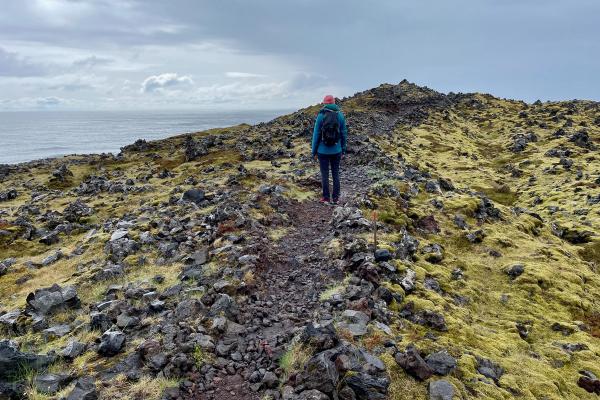
Conclusion
Djúpalónssandur Beach offers a perfect mix of natural beauty, culture, and Icelandic history. Unlike many tourist spots, this black pebble beach tells stories through its old lifting stones and solemn shipwreck remains, connecting visitors to Iceland's seafaring past.

